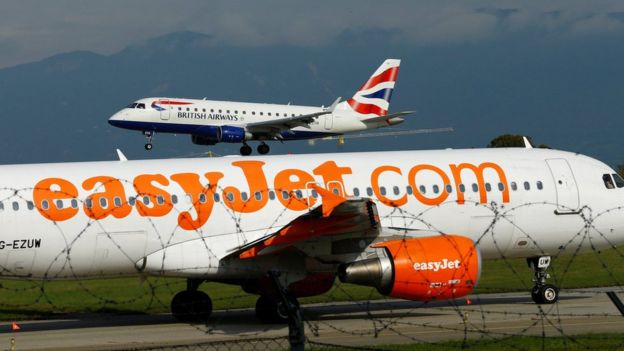EasyJet is backing plans to develop commercial passenger aircraft powered by electric batteries instead of conventional aero engines.
The airline wants the proposed planes to fly passengers on its short-haul routes, possibly within 10-20 years.
The prototype is going to be developed by a new US firm called Wright Electric, which has already built a two-seat battery-powered plane.
The new, larger plane would have a range of 335 miles, the companies said.
EasyJet said this meant it would be able to cover popular routes such as London to Paris, Brussels, Amsterdam, Cologne, Glasgow and Edinburgh.
EasyJet’s possible involvement was first revealed in March 2017.
Carolyn McCall, the chief executive of EasyJet, said she was now confident that such a plane, possibly carrying 220 passengers, would eventually fly.
“We share an ambition with Wright Electric for a more sustainable aviation industry,” she said.
“Just as we have seen with the automotive industry, the aviation industry will be looking to electric technology to reduce our impact on the environment.”
Wright Electric was only founded last year in the US.
It said EasyJet’s support was a “powerful validation” of its plans that would involve developing “new energy storage chemistries” that are lighter than conventional batteries.
The firms argued that if successful, this new technology would lead to a further big cut in the amount of fuel being burned in the air and on the ground, a big cut in emissions, and would also lead to much quieter aircraft.
Wright Electric explained that the new batteries it is hoping to invent would power the propellers or fans of aeroplane engines.
However the motors would be put inside a plane’s wings, rather than be slung underneath them.
That, it said, would make the planes more aerodynamic and would cut drag.
The batteries, the firm suggested, would be situated in the main body of the aircraft.
A company spokesman told the BBC that the technology was changing rapidly and that its preferred option was for a combination of lithium ion and aluminium air batteries, which would need to be one and half to two times as powerful as existing versions.
BBC


